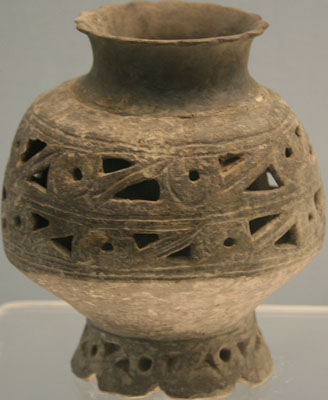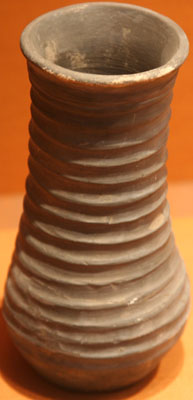Decorative Designs in Chinese Art 中国文物的纹饰
Pottery 陶器 Songze Culture 崧泽文化
Click on any word to see more details.
Songze Culture 崧泽文化
The Songze Culture was a Neolithic culture south of the lower reaches of the Yangtze River, named after a village in the Shanghai area.

Black pottery 黑陶 is a style of pottery originating in the middle and lower reaches of the Yellow River in the Neolithic Age. It was developed from painted pottery and became widespread starting around 2,000 BCE. It was mostly produced on a fast potter's wheel (kick wheel) that span faster than the slower wheels used previously. Shaping tools were also used. Polishing of the surface was sometimes done when the clay was almost dry. This gives a smooth and shiny appearance.

The widespread appearance of black pottery was related to changes in firing technology. Black pottery was fired in kilns at about 1,000 degrees Celsius compared to about 800 degrees Celsius for painted pottery. An iron reducing atmosphere would be created by blocking the smoke passage and leading to an oxygen deficient atmosphere. This resulted in the black color of the pottery. Black pottery was not as suitable for painting on so inscribed patterns, like shown below, were more common.
Chinese
Pinyin English
